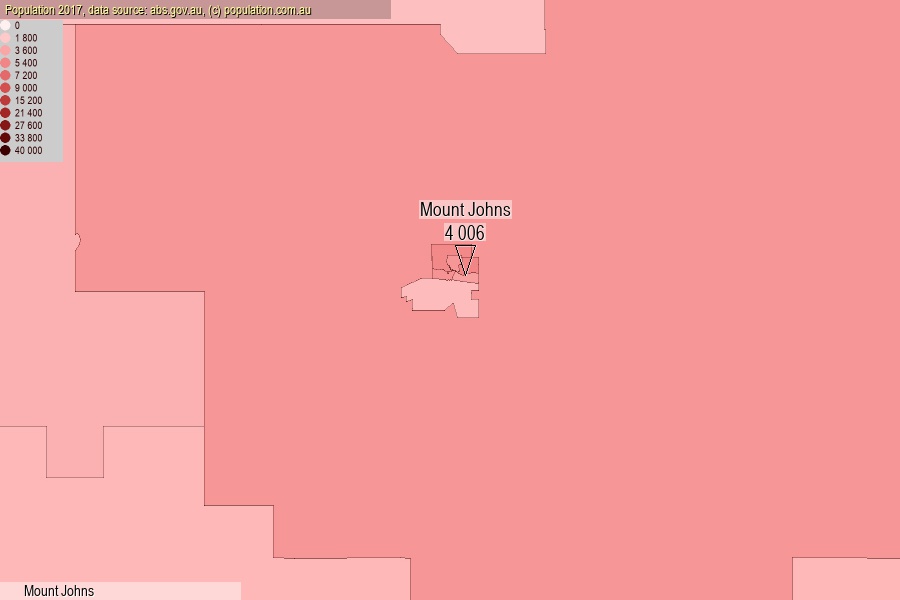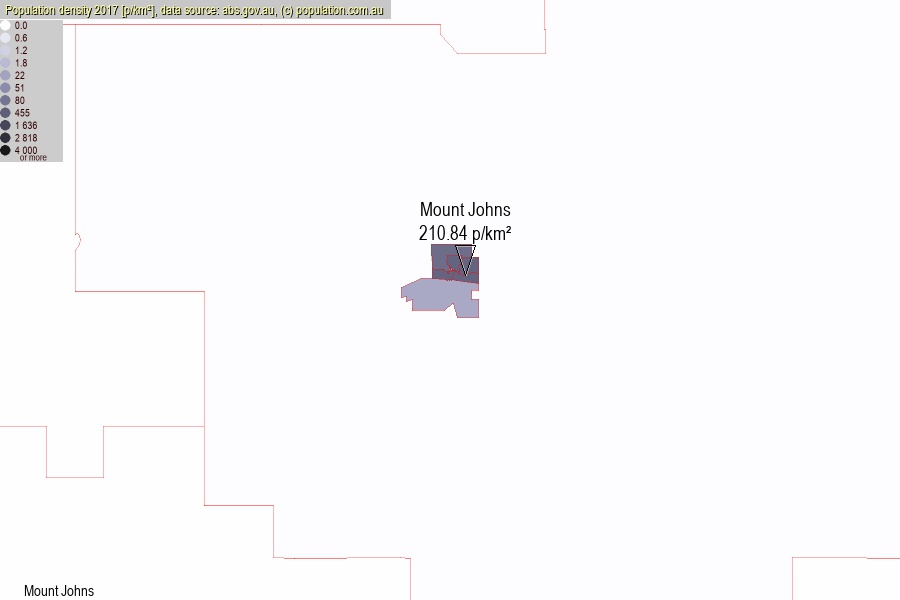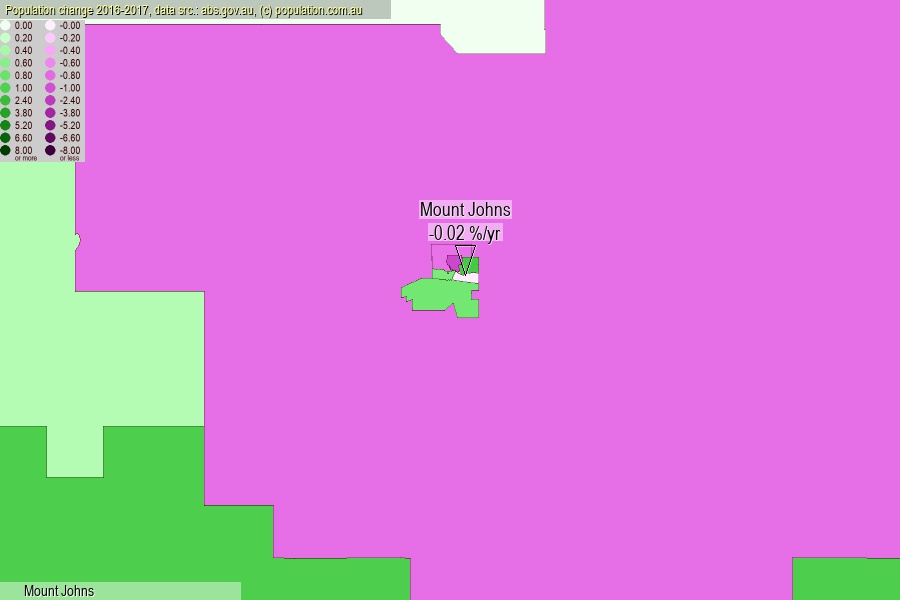 population.com.au
population.com.auLast official estimated population of Mount Johns (as Statistical Area Level 2) was 4 006 people (on 2017-06-30)[2]. This was 0.02% of total Australian population and 1.624% of NT population. Area of Mount Johns is 19.00 km², in this year population density was 210.84 p/km² . If population growth rate would be same as in period 2016-2017 (-0.02%/yr), Mount Johns population in 2025 would be 3 998. [0]



Click to enlarge. Mount Johns is located in the center of the images.
Population [people], population density [p./km²] and population change [%/year] [2]
View borders » (new window) [4]
[1991-1992] +1.64 %/Yr.
[1992-1993] +1.77 %/Yr.
[1993-1994] +1.11 %/Yr.
[1994-1995] +1.44 %/Yr.
[1995-1996] +3.58 %/Yr.
[1996-1997] +2.05 %/Yr.
[1997-1998] +1.58 %/Yr.
[1998-1999] +2.33 %/Yr.
[1999-2000] +1.85 %/Yr.
[2000-2001] +1.71 %/Yr.
[2001-2002] +1.73 %/Yr.
[2002-2003] +2.18 %/Yr.
[2003-2004] +0.94 %/Yr.
[2004-2005] +0.57 %/Yr.
[2005-2006] +1.72 %/Yr.
[2006-2007] -0.25 %/Yr.
[2007-2008] +0.76 %/Yr.
[2008-2009] +1.73 %/Yr.
[2009-2010] +1.09 %/Yr.
[2010-2011] +0.56 %/Yr.
[2011-2012] -0.24 %/Yr.
[2012-2013] -0.15 %/Yr.
[2013-2014] -0.34 %/Yr.
[2014-2015] -1.08 %/Yr.
[2015-2016] -0.91 %/Yr.
[2016-2017] -0.02 %/Yr.
[0] Calculated with linear interpolation from officially estimated population
[1] Read more about SA2 and Australian Statistical Geography Standard (ASGS) on abs.gov.au
[2] Population data from Australian Bureau of Statistics (Population and density: 2017; change: 2016-2017)
[3] Digital Boundaries: Australian Statistical Geography Standard (ASGS) 2016.
[4] Border coordinates are simplifyed using Ramer-Douglas-Peucker algorithm.